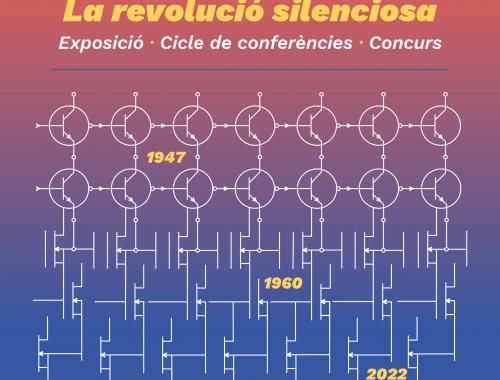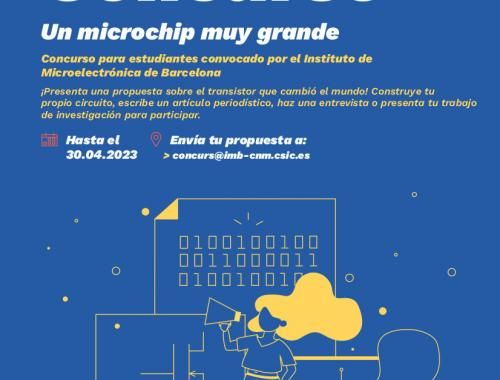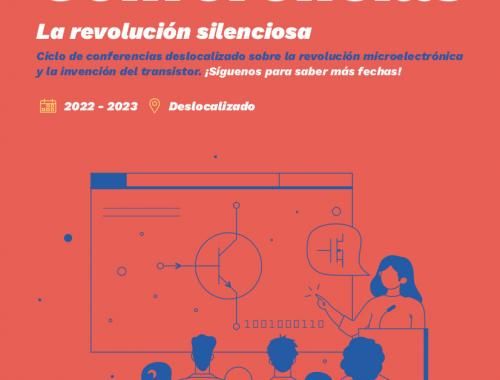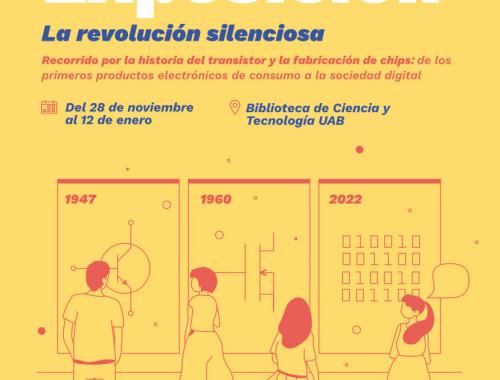75 years since the invention of the transistor: The silent revolution
The IMB-CNM celebrated the 75th anniversary of the invention of the transistor at Bell Labs in Murray Hill (New Jersey), a microelectronic component that is at the heart of the digital revolution. Find out about all the outreach activities we carried out to spread the word about the silent revolution.
Why celebrate the transistor today
The transistor is a semiconductor electronic device used to deliver an amplified output signal in response to an input signal and replaced the bulky and inefficient vacuum valves of the early 20th century. Although initially conceived as an analog amplifier device, over time its role was enhanced and its technology was adapted as a digital switch. Thus, the transistor represents the physical embodiment of the '1's and '0's of binary logic on which microprocessor chips and memories are based, integrating thousands or millions of these devices in a small space. The operation of the vast majority of the equipment we use every day (televisions, audio and video players, quartz watches, cell phones, computers, LED lamps, medical equipment, electric vehicles, etc.) is based on the properties of transistors and the integrated circuits built with them. It is a fundamental invention for understanding the development of microelectronics in the 20th century, the miniaturization of electronic components and the digitalization processes of society. The invention took place between 1947 and 1948, in December 1947 the experiment of physicists John Bardeen, Walter Houser Brattain and William Shockley was completed and the invention was published the following year.
The IMB-CNM is the only institute in Spain capable of manufacturing transistors with full CMOS technology. This means that we are the largest center in Spain dedicated to the research and development of micro nanotechnologies and electronic microsystems, with unique capabilities in silicon technology. The center is unique in the design and manufacture of integrated circuits or simply chips, in its Micro and Nanofabrication Clean Room.
You can find in Educational content on microelectronics all the educational materials made about chips, transistors are how a microfabrication clean room works. They are a support for actions on micro and nanoelectronics, to illustrate scientific concepts in educational centers, workshops and other events, or to create your own activities.
Exhibition "La revolució silenciosa"
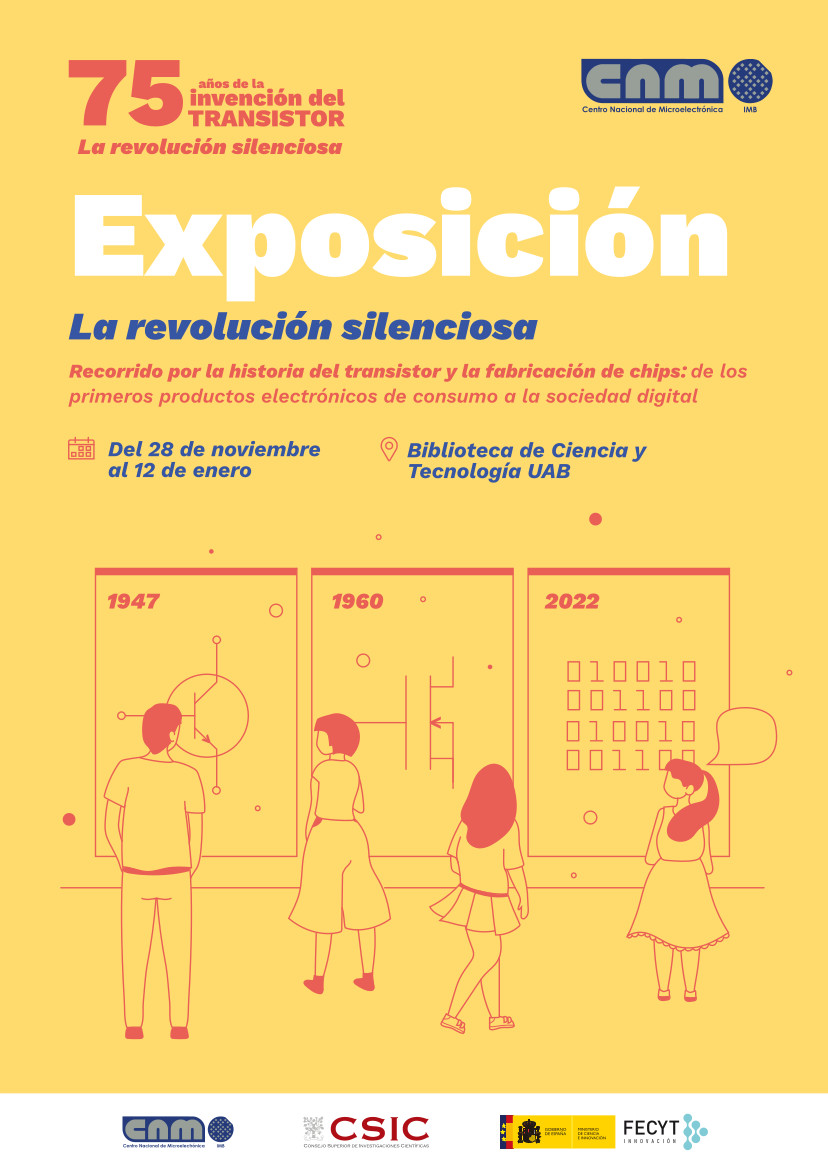 The exhibition explains the history of the transistor and all the technological innovations that its invention entailed. Starting with the problem of replacing vacuum tubes, we progressed to the possibilities that the transistor opened up for technology, miniaturization processes, and society, from the first compact transistor-based radios of the 1950s to today's mobile phones.
The exhibition explains the history of the transistor and all the technological innovations that its invention entailed. Starting with the problem of replacing vacuum tubes, we progressed to the possibilities that the transistor opened up for technology, miniaturization processes, and society, from the first compact transistor-based radios of the 1950s to today's mobile phones.
The initiative has the support of the Fundación Española para la Ciencia y la Tecnología · Ministerio de Ciencia e Innovación (FECYT).
The exhibition is itinerant and the schedule is as follows:
- Institut d'Estudis Catalans (IEC, Barcelona), from February 1st to March 7th, 2024.
- Centre Cultural Can Rajoler (Parets del Vallès), from January 10th to 30th, 2024.
- Lleialtat Santsenca (Barcelona), from November 2nd to 25th, 2023.
- FAB Casa del Mig (Barcelona), from June 5th to 28th, 2023.
- Escola Tècnica Superior d'Enginyeria de Telecomunicacions de Barcelona UPC (ETSETB-UPC, Barcelona), from April 20th to May 19th, 2023.
- Escola Tècnica Superior d'Enginyeria Industrial de Barcelona UPC (ETSEIB-UPC, Barcelona), from March 2nd to March 30th, 2023.
- UAB Science and Technology Library, from November 28, 2022 to January 12, 2023.
Contest Un microchip muy grande
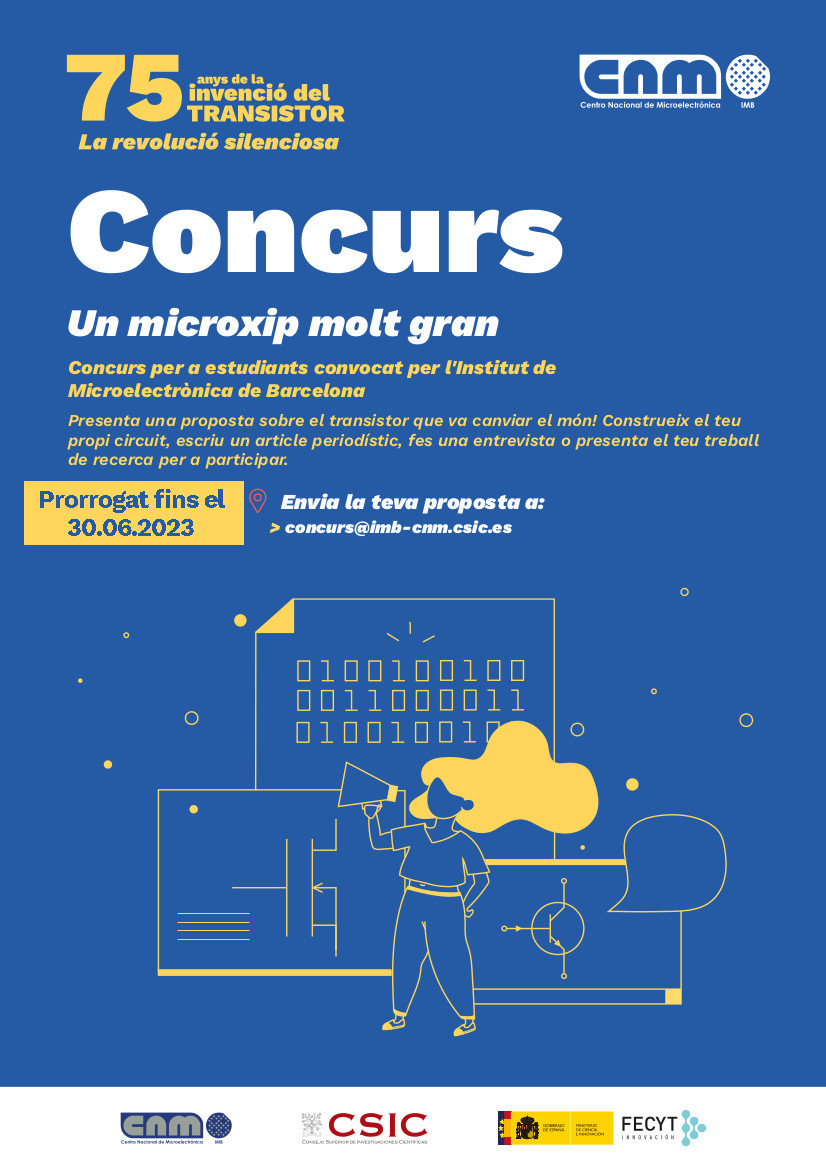 The IMB-CNM organizes the microelectronics contest for students Un microchip muy grande to encourage students' interest in electronics. It will reward proposals in the field of electronics and, more specifically, to the transistor as an electronic device. The launch coincides with the 75th anniversary of the invention of the transistor. It is a proposal of the IMB-CNM-CSIC financed by the Fundación Española de Ciencia y Tecnología (FECYT) - Ministerio de Ciencia e Innovación.
The IMB-CNM organizes the microelectronics contest for students Un microchip muy grande to encourage students' interest in electronics. It will reward proposals in the field of electronics and, more specifically, to the transistor as an electronic device. The launch coincides with the 75th anniversary of the invention of the transistor. It is a proposal of the IMB-CNM-CSIC financed by the Fundación Española de Ciencia y Tecnología (FECYT) - Ministerio de Ciencia e Innovación.
The competition was open until June 30 to compulsory secondary education, baccalaureate and formative cycles, both public and private throughout the country, aimed to stimulate scientific curiosity in microelectronics among pre-university students. Received proposals were from schools and institutes in Catalonia, Extremadura, the Canary Islands, the Balearic Islands and Castilla y León. The winning teams were announced in September 2023, an institute from Las Palmas de Gran Canaria and another from Manresa won the first prize in the categories of the competition.
Cycle of conferences "The Silent Revolution"
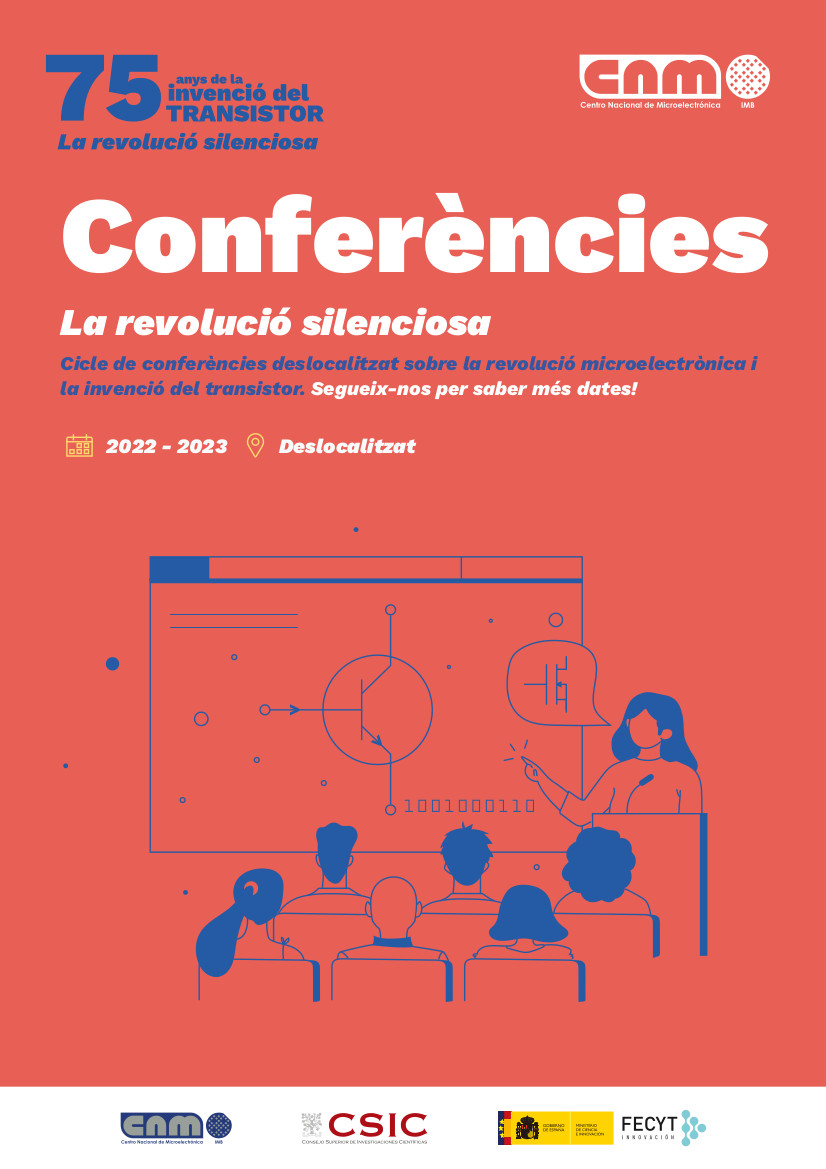 During 2022 and 2023, the years between which the anniversary of the invention is framed, we are organizing a cycle of conferences relocated to the province of Barcelona to offer different perspectives on the future, present and past of the transistor. The first talks of the cycle were:
During 2022 and 2023, the years between which the anniversary of the invention is framed, we are organizing a cycle of conferences relocated to the province of Barcelona to offer different perspectives on the future, present and past of the transistor. The first talks of the cycle were:
May 24, 2022: El 75 aniversario del Transistor Bipolar: La invención más importante del siglo XX (in Spanish). Lecture by professor Ignacio Mártil (Professor of Electronics at the Complutense University of Madrid and member of the Royal Spanish Physical Society) on "possibly the most important invention of the 20th century". At the Institute of Catalan Studies, in Barcelona.
June 8, 2022: LA microelectrònica (in Catalan). Talk by Núria Salán (President of the Catalan Society of Technology and UPC-Terrassa Professor) on the invisible contribution of women, technicians and scientists to the history of microelectronics. At the Institute of Catalan Studies, in Barcelona.
June 1, 2023: Presente y Futuro de la Micro y Nanoelectrónica (in Spanish). Talk by Tomás Palacios (professor at the Massachussetts Institute of Technology) about the societal challenges faced by research in micro and nanoelectronics.
November 21st, 2023: Experiences Working in California’s Silicon Valley of the 1980s (in English). Invited talk by Alexander A. Grillo (Santa Cruz Institute for Particle Physics, University of California Santa Cruz. Retired) about his own experience working in Silicon Valley in the 1980s, in two so-called “startup” companies and in one of the standard bearers, Intel Corporation.
The designs for the 75th anniversary of the transistor campaign were created by Xurris & Co.
Support from FECYT, Ministry of Science and Innovation and CSIC
A project funded by the Spanish Foundation for Science and Technology (FECYT, ref. FCT-21-16975) of the Ministry of Science and Innovation and organized by the Spanish National Research Council (CSIC). The objective is the education and generation of scientific vocations among children and non-university young students (Line of action 2 – FECYT), increasing their learning and interest in scientific-technological careers, and, in particular, in electronics, through contact directly with the research method and practice. It places special emphasis on the visibility of groups often forgotten in the STEM or STEM (Science, Technology, Engineering and Mathematics) disciplines, such as women scientists. The IMB-CNM aims to bring electronics closer to the public and spread its activity among society, promoting this discipline and contributing to technological and innovative training in this sector that is so strategic in the global context.





